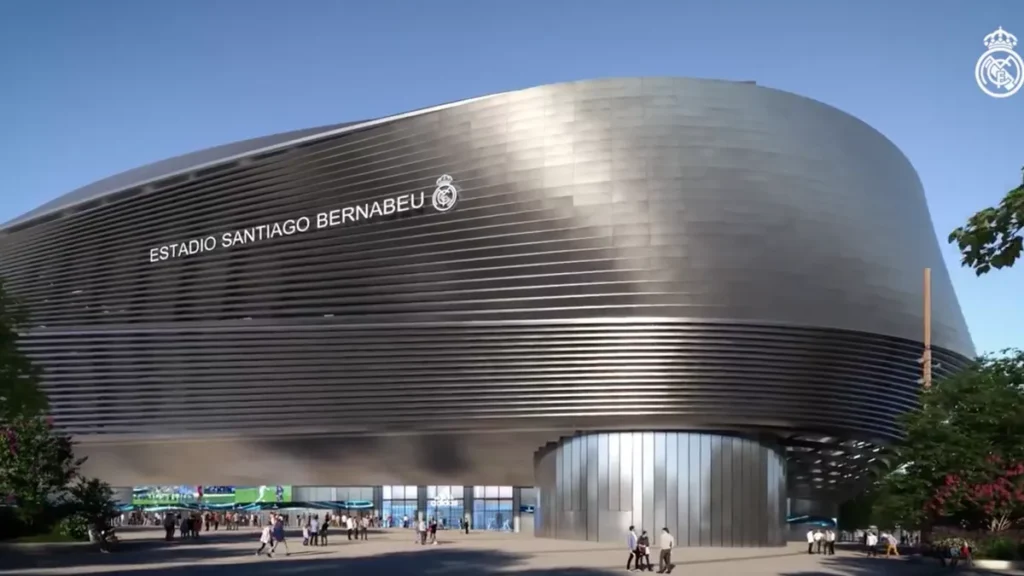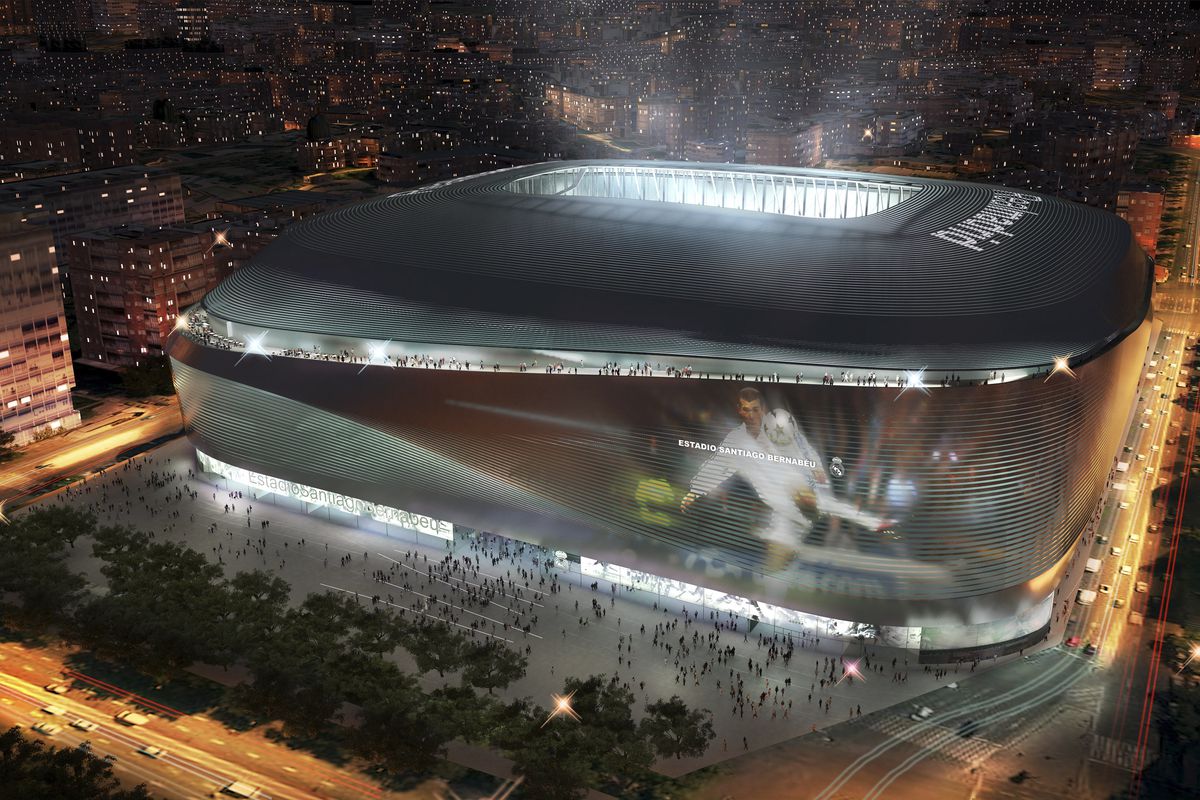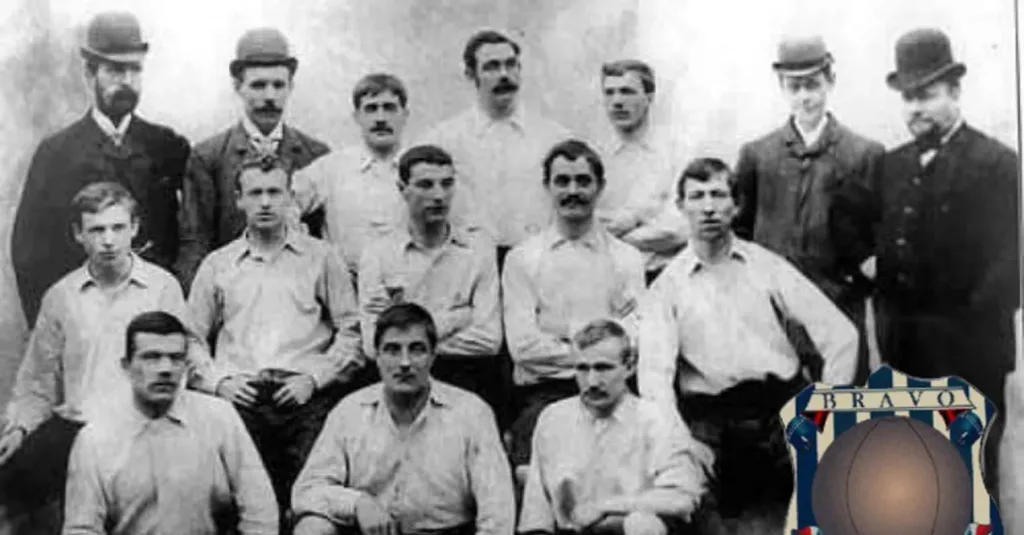The Bernabéu is one of the football world’s places of worship. A mecca. A temple. A monument to perhaps the most illustrious club around the globe. Real Madrid’s Bernabéu is one of the great theatres of football, standing alongside arenas such as the San Siro, the Nou Camp and the Maracana.
Madrid’s Bernabéu has a history spanning almost 80 years, no doubt playing a huge part in the side’s growth in popularity. The stadium they played at before, Estadio Chamartín, had a 22,500 capacity. Today, the Bernabéu boasts a capacity of 81,000, but the record attendance is 129,690, as supporters flocked to watch Los Blancos play AC Milan in 1956.
The ground has hosted 4 European Cup finals and, in 2018, hosted the only Copa Libertadores final to take place in Europe.
Who was Santiago Bernabéu?
Santiago Bernabéu was a former player, appearing for what was then Madrid FC but would soon become Real Madrid. He was essentially a one-club man, though he made one appearance for Atletico Madrid in 1921.
He only ever appeared in 51 recorded games, but with a return of 46 goals from those matches, it’s easy to see why he was a favourite as a player. Bernabéu is largely considered responsible for Real Madrid’s unprecedented levels of success. After being sworn in as club president, he restructured the club from top to bottom, using the model that is now the basis of every professional football club.
Ambitious, and a visionary, his genius came during Spanish football’s wilderness period, with the sport having been suspended due to the Spanish Civil War.
After the war, Bernabéu spent months finding, contacting and recruiting former players and staff re-building the club from scratch. At this point, he wasn’t even club president, though this would shortly be rectified.
In 1943, he was sworn in as president, his impassioned work laying the foundations for exponential growth; not just for Madrid, but for Spanish football as a whole.
After months and months of assembling both a squad of players and a backroom team, there was one issue left to solve. The Chamartín Stadium wasn’t fit for the new look Real Madrid, a side that had won two League titles, by this point, but this was not the same Madrid. This was a new beast, and this beast needed a lair befitting its new form.
At the time of completion, the stadium was simply known as the rather unoriginal monicker, Nuevo Estadio Chamartín, literally just taking the old stadium name, but that would be subject to change.
In 1958, Santiago Bernabéu would help rebuild Manchester United in a similar fashion, following the Munich air disaster.
What would become The Santiago Bernabéu Stadium was inaugurated on December 14, 1947, with a friendly match between Real Madrid and Portuguese club Belenenses. The stadium initially had a seating capacity of 75,145 spectators and had state-of-the-art facilities for the time.
In their inaugural friendly Real Madrid triumphed 3-1 over the Portuguese side, setting a high standard from the off.
If their inauguration was a good day, then their first league game would be even better. Facing Basque giants Bilbao, Madrid easily won 5-1, the side unfettered by playing in front of a much larger crowd, instead letting it fuel the side’s lofty ambitions.
Though, for all their promise, and all the optimism, a 3rd league title was still years away.
The Bernabéu: A Fitting Tribute
The 50s was a glorious time for Madrid, as the side would play host to some of the greatest and most influential footballers of all time. Alfredo Di Stefano, Ferenc Puskas and Paco Gento all dazzling on the pitch. As far as silverware went, the side would finally see another league title after 20 years of waiting, winning the 53-54 league title.
Yet an even more momentous occasion would occur in the 50s, as Madrid’s home finally got the name it so desperately needed. After an assembly of the club’s hierarchy, a new name was decided.
There was only one man worthy of having his name associated with one of the greatest stadiums on Earth; the President that had worked so tirelessly to rebuild Madrid with his own sweat and blood, as the now iconic ground was donned, The Bernabéu.
Not content to call it a day on innovation, Bernabéu, even after the honour of his name being the home of Madrid, went and set the foundations for what would soon become the European Cup, or as it’s now known, the Champions League.
Initially, the tournament was a loosely structured invitational for teams around Europe, but it quickly became football’s premier competition, a chance to see teams from across Europe that would otherwise remain an enigma to most football fans.
With hype around the new European Cup building, and Real Madrid finding instant success in the competition, the Bernabéu’s capacity was expanded to 125,000, boasting the biggest capacity in the competition.
The club went on to secure an unprecedented five consecutive European Cup titles from 1956 to 1960.
But in more important news, in 1957, floodlights were installed.
By 1965, the club had finally transferred everything across from the previous offices, and for now, the club could sit and bask in the glory of their stadium.
Modernization: Touching up a Masterpiece
In the subsequent years, the Santiago Bernabéu Stadium has undergone numerous renovations and expansions to enhance the spectator experience, the club is far too attached to their home to even consider relocation.
Upgrading in order to meet modern standards was a necessity, however, as significant changes have been made as both safety and stadium facilities around the world improved.
In the early 1980s, the stadium underwent a significant facelift, including the addition of a new roof and a seating capacity reduction to comply with safety regulations.
In 1982, FIFA had enforced a rule that two-thirds of the seating in a stadium needed to be covered, so a roof was built that covered the first two areas of seating.
Further changes were expected, as electronic scoreboards were installed at both ends, and locker rooms were brought up to scratch in accordance with higher standards for player welfare. Press rooms were renovated and ease of access for those with disabilities was improved upon.
The capacity was also reduced by 22,000, brought down from 120,000 to 98,000 to better comply with fan safety.
By the 1990s and early 2000s corporate boxes and VIP lounges were introduced.
The Stadium has become something more than just a football arena over the last 3 decades. The commercial centre, La Esquina del Bernabéu, was erected whilst 20,000 seats were upgraded to provide a better viewing experience for supporters.
However, for all the good their renovations did, Real Madrid soon found a new problem to overcome. In order to facilitate many of the stadium and quality of life upgrades, the height of the arena had more than doubled from 22 meters to 45.
This had caused an unforeseen issue, in which two-thirds of the grass was now permanently in the shade, with lack of sunlight causing the grass to wilt. Furthermore, in the winter, the lack of direct sunlight lead to a higher chance of the pitch freezing.
To combat the issue, one of the first under-soil heating systems was implemented: a 30 km Polypropylene pipe was installed just under the turf.
The new height also further impacted fan comfort, the old roof no longer sufficient to protect Madridistas from the elements, leading to the implementation of a retractable protective roof.
If it wasn’t readily apparent that maintaining a fit and proper stadium was fraught with difficulty by now, then the reduction of capacity, in accordance with UEFA, from 106,000 to 74,328 spectators, would drive home the matter. UEFA were entirely phasing out standing tickets and areas, requiring every fan who bought a ticket to have a seat.
As a new millennium was on the horizon, Madrid could look back at years of continued success with pride, but the constant moving of the goalposts as Madrid scrambled to keep up with safety regulations over the last 20 years was no doubt exhausting and even disappointing at times. New changes so often just lead to new problems.
But in 1999, a feature that would bring the fans closer than ever before to the magic was announced, as the club began running stadium tours. This practice would take off, leading to clubs around the world offering fans a chance to walk in the same footsteps of their heroes.
The Commercial potential of the ground was now being realised.
Renovating for Revenue
As a new president was sworn in, a new, clear goal was put in place to further improve an already legendary stadium. Fan comfort and generating revenue were set out at the forefront of Florentino Perez’s manifesto, as 127 million euros was invested across five years of renovation.
Press areas, dressing rooms, training facilities, escalators and lifts, bars, restaurants, under-seat heating for fans and even the audio system were all either added or improved upon. The capacity even increased to 80,354, with over 5,000 new seats installed.
The club had embarked on a mission to have their beloved ground classified as an Elite Stadium by UEFA.
The mission would prove successful. In 2007, just a month before the stadium’s 60th anniversary, UEFA had concluded The Bernabéu met the requirements to be considered an elite stadium.
Now and The Future
Over the last few years, the capacity has further been expanded, taking it to its current amount of 81,044. In 2014, President Perez announced the intention to sell the naming rights to fund a 400 million euro redevelopment of the stadium, though as of yet this has not come to fruition.
In 2019, a 525 million euro project began, with no change to the stadium’s name required, Perez finding a chunk of spare change under his futon no doubt.
Work on the stadium has been severely disrupted by both the Covid-19 pandemic and the Ukraine – Russia war.
The future looks to include even more improvements to their beloved home. Real Madrid’s ambitious plans for the Bernabéu’s future include a complete renovation that will transform the iconic venue into a state-of-the-art sporting and entertainment complex.
The planned renovations involve the installation of a retractable roof, a new façade, and the incorporation of cutting-edge technology to create an immersive and modern fan experience. However, as more improvements are made, the club is still expected to sell the stadiums’ naming rights in the near future to allow for the rest of the project to go ahead.
Capacity will also further increase by 4,000, while more restaurants, a shopping centre and hotel are expected to be added. The club plans to increase stadium revenue, by making it turn a profit everyday year round and not just on matchdays.









